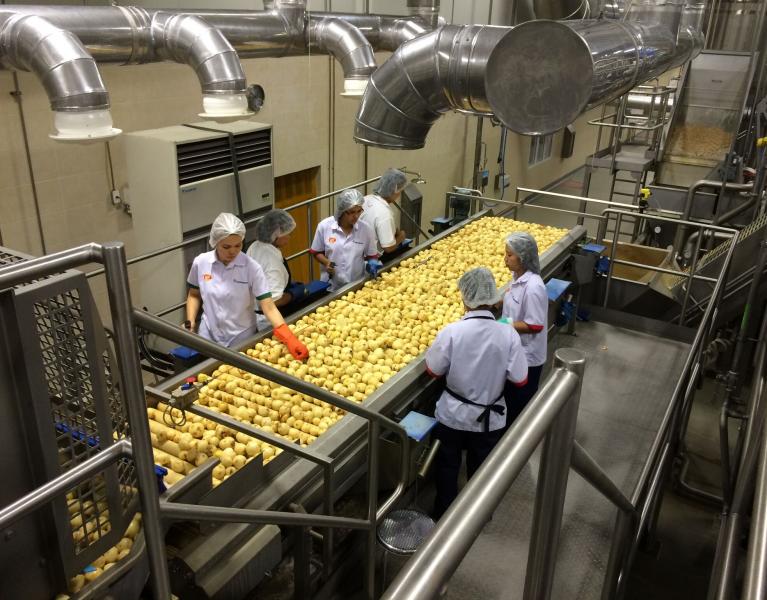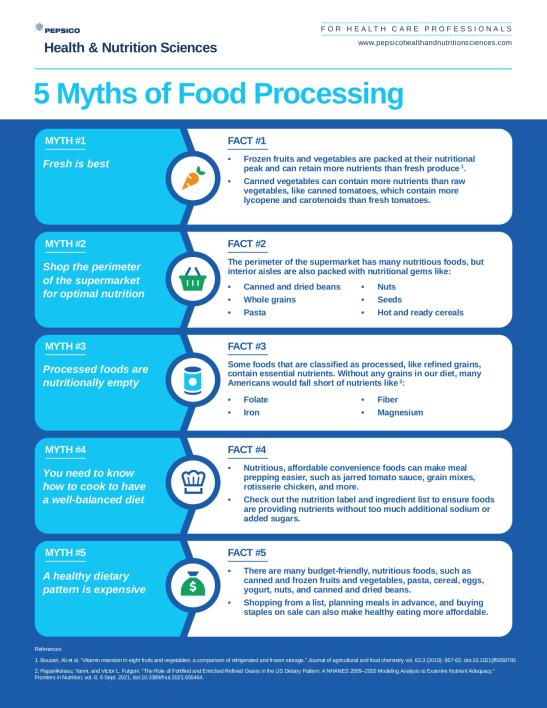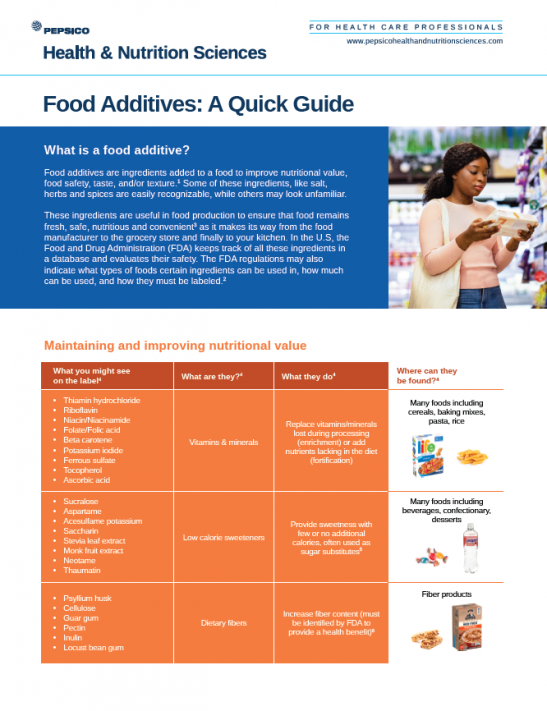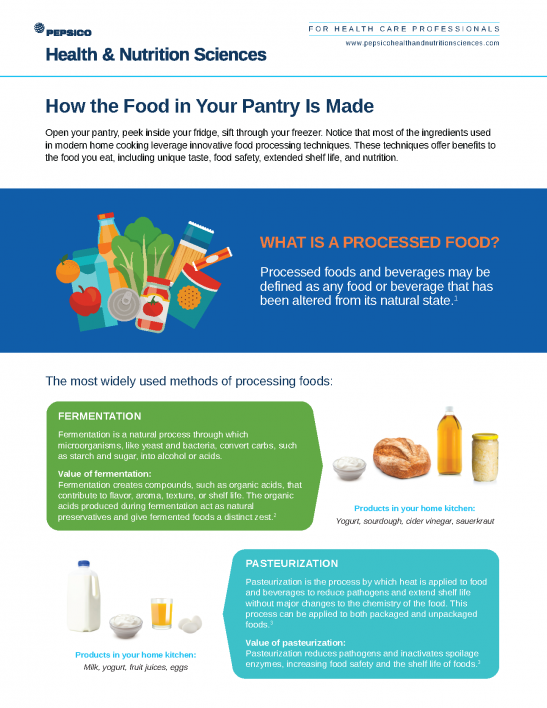Ames, N., Malunga, L. N., Mollard, R., Johnson, J., . . . Thandapilly, S. J. (2021). Effect of processing on oat β-glucan viscosity, postprandial glycemic response and subjective measures of appetite. Food & Function, 12(8), 3672–3679. doi:10.1039/d0fo03283b
Abstract:
Oat has procured its acclaim as a health promoting food partially due to its positive effect on glucose control. It has been demonstrated that oat β-glucan can interfere with postprandial glucose response. A large majority of this action is attributed to the increase in viscosity due to the β-glucan content in oat foods. While it is known that an increase in viscosity due to higher molecular weight of β-glucan can improve its glycemic effects, it is not known if an increase in viscosity attained by processing variables can further enhance the positive effect of oat on glucose control. In the current study we have examined the effect of kilning, tempering, microwaving, cooking, soaking and flaking on oat β-glucan viscosity. An acute randomized crossover clinical trial was also conducted to test oatmeal products containing low, medium and high β-glucan viscosity for their effect on postprandial glycemic response. Results from the processing experiments demonstrate that kilned samples, when tempered to 25% moisture and microwaved for 2 minutes, can produce much higher final viscosity compared to other samples with similar β-glucan content, molecular weight and solubility. However, results from the clinical trial show that the increase in the viscosity of the oat β-glucan attained through processing in this study did not have any effect on postprandial glucose control.
Berezhnaya, Y., Bikaeva, I., Gachkovskaia, A., Demidenko, A., . . . Alexeev, D. (2021). Temporal dynamics of probiotic Lacticaseibacillus casei and rhamnosus abundance in a fermented dairy product evaluated using a combination of cultivation-dependent and -independent methods. LWT- Food Science and Technology, 148, 111750. doi:10.1016/j.lwt.2021.111750
Abstract:
Benchmark of cost-efficient and accurate methods for quantifying probiotics in dairy products represents great interest to the food industry. The advantages of cultivation-independent techniques over the traditionally used cultivation-based ones are to be investigated in this context. We evaluated the levels of Lacticaseibacillus casei and rhamnosus in multiple formulations of a fermented dairy product fortified with these probiotics during the shelf-life using cultivation, taxon-specific qPCR augmented with propidium monoazide (PMA) viability test and 16S rRNA gene sequencing. The analyzed products were the yogurts produced with traditional yogurts starter cultures including Bifidobacteria or without them. The effect of the starter culture on probiotics viability and abundance was assessed. The methods for probiotic profiling were compared. All methods confirmed high levels for the probiotics throughout the shelf-life. The PMA-qPCR showed that their non-viable proportion was low. The formulations with the starter cultures including Streptococcus and Lactobacillus were associated with a lower abundance of each probiotic compared to those that additionally had Bifidobacterium in the starter culture. The total microbial composition according to the sequencing was generally as expected, but the method was of limited use for profiling the probiotic levels due to the data compositionality and dominance of the starter culture taxa.
Wolever, T. M. S., Jenkins, A. L., Yang, J., Nisbet, M., . . . Pan, Y. (2019). An optimized, slowly digested savory cluster reduced postprandial glucose and insulin responses in healthy human subjects. Current Developments in Nutrition, 3(3), nzz006. doi:10.1093/cdn/nzz006
Abstract:
Background: Slowly digested carbohydrates are perceived as beneficial by some consumers, and various regulatory bodies have published specific criteria defining lower postprandial glycemic response. We developed an optimized savory cluster snack containing slowly digested starch. Objective: We compared the glucose and insulin responses elicited by the optimized (test-) cluster, a control-cluster, and an available-carbohydrate-matched portion of white bread in healthy individuals. The primary outcome was blood-glucose peak rise. We tested healthy individuals (n = 25) on 3 occasions using a randomized crossover design. On each occasion, the participants provided fasting blood samples and then consumed 1 serving of test-cluster, control-cluster, or white bread. We then measured the participants’ blood-glucose and serum-insulin concentrations over the next 4 h. Results: The test-cluster elicited a significantly lower blood-glucose peak rise (mean ± SEM: 1.24 ± 0.09 mmol/L) and incremental area under the curve (iAUC; 67 ± 8 mmol × min/L) than the control-cluster (2.27 ± 0.13 mmol/L and 117 ± 10 mmol × min/L, respectively) and white bread (2.27 ± 0.16 mmol/L and 114 ± 9 mmol × min/L, respectively). The serum-insulin peak rise and iAUC elicited by the test-cluster (128 ± 13 pmol/L and 6.10 ± 0.73 nmol × min/L, respectively) and white bread (141 ± 20 pmol/L and 6.47 ± 1.11 nmol × min/L, respectively) were significantly lower than those elicited by the control-cluster (205 ± 26 pmol/L and 9.60 ± 1.31 nmol × min/L, respectively). Conclusion: The test-cluster elicited lower glucose and insulin responses than the control-cluster. The results support the hypothesis that the carbohydrates in the test-cluster are digested and absorbed slowly in vivo.
Rebello, C. J., Johnson, W. D., Pan, Y., Larrivee, S., . . . Greenway, F. L. (2020). A snack formulated with ingredients to slow carbohydrate digestion and absorption reduces the glycemic response in humans: A randomized controlled trial. Journal of Medicinal Food, 23(1), 21-28. doi:10.1089/jmf.2019.0097
Abstract:
This study compared the effect of a snack with ingredients to slow carbohydrate digestion (Test-snack) on postprandial blood glucose and insulin concentrations and subjective appetite ratings. We hypothesized that Test-snack would lower glucose and insulin responses and reduce appetite compared with a Control-snack. Overweight or obese subjects (n = 17) completed a randomized crossover study. Glucose, insulin, and appetite ratings were measured before consuming each snack or white bread (Bread) and over a period of 4 h. Subjects received Test-snack, Control-snack, or Bread in random order at least a week apart. The a priori primary outcome was the glucose response, and the secondary outcomes were appetite ratings and insulin responses. Mixed effects statistical models were used to perform analysis of variance in terms of the area under curve (AUC) and at specific time points. The 2-h AUC for glucose was significantly lower with Test-snack compared to Control-snack and Bread (AUC and 95% confidence intervals: Test = 2186.43 [1783.36–2589.51]; Control = 3293.75 [2893.97–3693.54]; Bread = 2800.28 [2405.79–3194.77] mg/dL · min). Four-hour AUC for glucose, and insulin, followed a similar pattern except that Test-snack did not differ from Bread. The glucose concentrations peaked at 45 min under all three conditions, but Test-snack elicited a lower response than Control-snack and Bread (P < .01). Test increased fullness and satisfaction and reduced hunger and prospective intake compared to Bread (P < .02), but was not significantly different from Control-snack. Ingredients that slow carbohydrate digestion in a snack reduce the postprandial glucose and insulin responses compared to a product without these ingredients.
Wolever, T. M. S., Johnson, J., Jenkins, A. L., Campbell, J. C., . . . Chu, Y. (2019). Impact of oat processing on glycaemic and insulinaemic responses in healthy humans: A randomised clinical trial. British Journal of Nutrition, 121(11), 1264-1270. doi:10.1017/S0007114519000370
Abstract:
Oats can be processed in a variety of ways ranging from minimally processed such as steel-cut oats (SCO), to mildly processed such as large-flake oats (old fashioned oats, OFO), moderately processed such as instant oats (IO) or highly processed in ready-to-eat oat cereals such as Honey Nut Cheerios (HNC). Although processing is believed to increase glycaemic and insulinaemic responses, the effect of oat processing in these respects is unclear. Thus, we compared the glycaemic and insulinaemic responses elicited by 628 kJ portions of SCO, OFO, IO and HNC and a portion of Cream of Rice cereal (CR) containing the same amount of available-carbohydrate (23 g) as the oatmeals. Healthy males (n 18) and females (n 12) completed this randomised, cross-over trial. Blood was taken fasting and at intervals for 3 h following test-meal consumption. Glucose and insulin peak-rises and incremental AUC (iAUC) were subjected to repeated-measures ANOVA using Tukey’s test (two-sided P<0·05) to compare individual means. Glucose peak-rise (primary endpoint, mean (SEM) mmol/l) after OFO, 2·19 (SEM 0·11), was significantly less than after CR, 2·61 (SEM 0·13); and glucose peak-rise after SCO, 1·93 (SEM 0·13), was significantly less than after CR, HNC, 2·49 (SEM 0·13) and IO 2·47 (SEM 0·13). Glucose iAUC was significantly lower after SCO than CR and HNC. Insulin peak rise was similar among the test meals, but insulin iAUC was significantly less after SCO than IO. Thus, the results show that oat processing affects glycaemic and insulinaemic responses with lower responses associated with less processing.
Wang, X., Storsley J., Thandapilly S. J., Chu, Y. F., & Ames, N. (2016). Effect of processing, cultivar, and environment on the physicochemical properties of oat β-glucan. Cereal Chemistry, 93(4), 402-408. doi:10.1094/CCHEM-12-15-0245-R
Abstract:
Several food regulatory agencies around the world have approved health claims for oat-derived β-glucan for cholesterol lowering and glycemic control. The biological efficacy of β-glucan appears to depend both on daily intake and on physicochemical properties, such as molecular weight and viscosity. The objective of this study was to determine the effects of oat processing, genotype, and growing location on the physicochemical properties of β-glucan. Five oat genotypes (HiFi, Leggett, CDC Dancer, Marion, and CDC Morrison) grown in two locations (Saskatoon and Kernen) were dehulled (untreated) and processed in a pilot facility through kilning (kilned, not flaked) and subsequent steaming and flaking (kilned, flaked). Untreated groats gave a relatively low Rapid Visco Analyzer (RVA) apparent viscosity (164 cP) and a low extractable β-glucan molecular weight (332,440) but exhibited high β-glucan solubility (90.49%). Compared with untreated groats, the kilned (not flaked) samples had significantly increased RVA apparent viscosity (314 cP) and extractable β-glucan molecular weight (604,710). Additional processing into kilned and flaked products further increased RVA apparent viscosity (931 cP) and β-glucan molecular weight (1,221,760), but β-glucan solubility (63.83%) was significantly reduced. Genotype and growing environment also significantly affected β-glucan viscosity and molecular weight, but no significant interaction effects between processing, genotype, and environment were found. Results indicate that there is potential for processors to improve the physicochemical and nutritional properties of oat end products through processing of specific oat genotypes from selected growing locations.
Tosh, S. M., & Chu, Y. (2015). Systematic review of the effect of processing of whole-grain oat cereals on glycaemic response. British Journal of Nutrition, 114(8), 1256-1262. doi:10.1017/S0007114515002895
Abstract:
Whole-grain oats have been identified as a type of food that blunts blood glucose increase after a meal. However, processing of oats changes the physical characteristics of the grain, which may influence human glycaemic response. Therefore, the effect of different processes on acute postprandial glycaemic response, quantified using glycaemic index (GI) measurements, was investigated in a systematic review. A review of the literature identified twenty publications containing fifty-six individual tests. An additional seventeen unpublished tests were found in an online database. Of the seventy-two measurements included in the review, two were for steel-cut oats, eleven for large-flake oats, seven for quick-cooking (small flake) oats, nine for instant oatmeal and twenty-eight for muesli or granola. One granola measurement was identified as an outlier and was removed from the statistical analysis. In all, fifteen clinical tests were reported for rolled oat porridge that did not specify the type of oats used, and thus the effect of processing could not be assessed. Steel-cut oats (GI=55 (SE 2·5)), large-flake oats (GI=53 (SE 2·0)) and muesli and granola (GI=56 (SE 1·7)) elicited low to medium glycaemic response. Quick-cooking oats and instant oatmeal produced significantly higher glycaemic response (GI=71 (SE 2·7) and 75 (SE 2·8), respectively) than did muesli and granola or large-flake oatmeal porridge. The analysis establishes that differences in processing protocols and cooking practices modify the glycaemic response to foods made with whole-grain oats. Smaller particle size and increased starch gelatinisation appear to increase the glycaemic response.
Barrett, D. M., & Lloyd, B. (2012). Advanced preservation methods and nutrient retention in fruits and vegetables. Journal of the Science of Food and Agriculture, 92(1), 7–22. doi:10.1002/jsfa.4718
Abstract:
Despite the recommendations of international health organizations and scientific research carried out around the world, consumers do not take in sufficient quantities of healthy fruit and vegetable products. The use of new, ‘advanced’ preservation methods creates a unique opportunity for food manufacturers to retain nutrient content similar to that found in fresh fruits and vegetables. This review presents a summary of the published literature regarding the potential of high-pressure and microwave preservation, the most studied of the ‘advanced’ processes, to retain the natural vitamin A, B, C, phenolic, mineral and fiber content in fruits and vegetables at the time of harvest. Comparisons are made with more traditional preservation methods that utilize thermal processing. Case studies on specific commodities which have received the most attention are highlighted; these include apples, carrots, oranges, tomatoes and spinach. In addition to summarizing the literature, the review includes a discussion of postharvest losses in general and factors affecting nutrient losses in fruits and vegetables. Recommendations are made for future research required to evaluate these advanced process methods.







